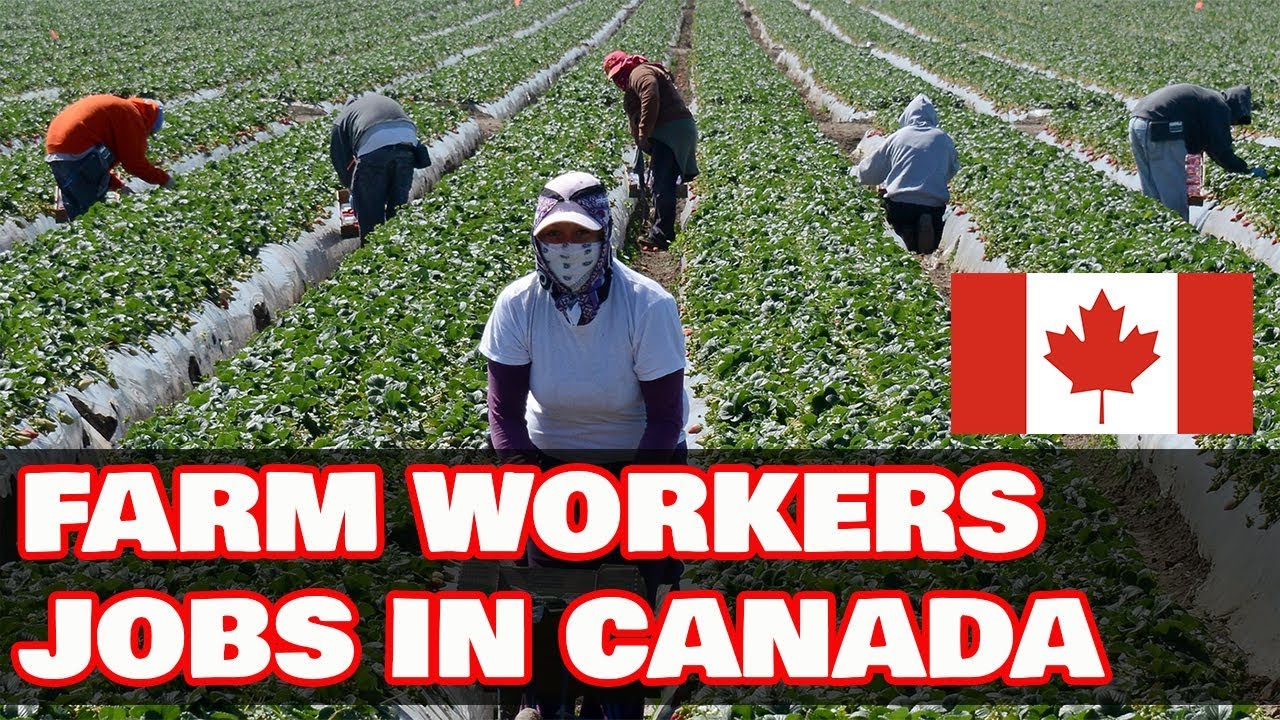Canada’s farms, greenhouses, and meat-processing plants have faced persistent labour shortages for years. To stabilize food supply chains and reward long-term workers, Canada ran the Agri-Food Pilot—often called the agriculture stream—to give experienced, non-seasonal agri-food workers a pathway to permanent residence (PR).
Here’s the crucial 2025 update:
-
The Agri-Food Pilot stopped taking new applications on May 14, 2025. IRCC will continue to process files submitted before that date (or before the annual cap was reached), but no new applications are accepted.
-
In January 2025, IRCC also capped the year’s intake at 1,010 PR applications; once the cap or the May 14, 2025 end date hit, intake closed. If you missed the intake, don’t panic: new rural programs and provincial options can still work for many agri-food workers (details below).
-
This guide explains eligibility, documents, the (now-closed) application process, updated 2025 rules, what to do if you applied already, and what to do next if you didn’t—with practical tips from the field.
Snapshot of the program (what it was)
Purpose: Test a PR pathway tailored to specific agri-food industries and occupations facing chronic shortages.
Industries covered (NAICS):
-
Meat product manufacturing (3116)
-
Greenhouse, nursery & floriculture production (1114) — including mushrooms
-
Animal production (1121, 1122, 1123, 1124, 1129) (aquaculture excluded)
-
Common eligible occupations (TEER 4–5 also included):
-
Farm supervisors (NOC 82030)
-
Specialized livestock/farm machinery operators (NOC 84120)
-
Livestock labourers (NOC 85100)
-
Harvesting labourers (NOC 85101)
…and others listed by IRCC for each industry.
Key 2023–2025 improvements (now historical but still relevant for in-process files):
-
Open work permits for family members of pilot participants (with conditions).
-
Union reference letters allowed as proof of work experience.
-
Some flexibility updates benefiting workers already in Canada (e.g., meeting either the job-offer or education requirement in certain circumstances)
Step-by-step: How candidates applied (for those already in process)
If you submitted before the intake closed, this is the framework IRCC uses to assess your file. If you didn’t submit in time, jump to “What to do now that the pilot closed”.
1) Confirm your eligibility
You needed to show that you:
-
Worked at least 12 months full-time, non-seasonal in eligible agri-food occupations/industries (often in Canada under the TFWP; some later updates recognized certain open-permit experience).
-
Held a valid, indeterminate (non-seasonal), full-time job offer outside Quebec in an eligible occupation at or above prevailing wage.
-
Met language at CLB 4 (English or French).
-
Had education at high-school level or higher (ECA required if foreign).
-
Could show settlement funds (unless already working in Canada).
Personal tip: Applicants who front-loaded strong work proofs (employment letters + pay stubs + ROEs + union letters where applicable) saw smoother processing because agri-food experience can be fragmented across employers and seasons.
2) Gather documents that fit IRCC’s standards
-
Passport (valid long enough for processing).
-
Reference letters (on letterhead, with duties matching NOC, dates, hours, wage).
-
Union letter (if applicable, per the update).
-
Language test (IELTS/CELPIP/TEF) showing CLB 4+.
-
ECA report for foreign education.
-
Proof of funds (unless exempt).
-
Police certificates and upfront medical (as instructed).
Expert advice: In agri-food, job titles vary. IRCC checks duties against NOC—not job titles. Align your letters to core duties of the NOC listed for your industry.
3) Apply online for PR under the pilot
-
Create an IRCC PR Portal account, select the Agri-Food Pilot, and upload forms + proofs.
-
Pay processing + Right of Permanent Residence (RPRF) fees.
-
Submit before the cap/date.
Pro move: If you qualified, a bridging or employer-specific work permit strategy (with your employer’s LMIA/offer) helped you maintain status while PR processed; your family might have qualified for open work permits if criteria were met.
4) Biometrics, medicals, and processing
-
Biometrics at a VAC; medicals per IRCC instruction.
-
Processing varied; 2025 introduced the intake cap, which shaped pacing.
-
What happens now?
-
If you submitted on time, IRCC will continue processing your PR application. If approved, you’ll receive confirmation of PR and next steps. If refused, you’ll be told why and what options remain.
Table 1 — Core Eligibility at a Glance
| Category | Requirement (Pilot Rules) | Where to Verify/Notes |
|---|---|---|
| Work experience | 12 months full-time, non-seasonal, in eligible occupations & industries | IRCC’s eligible industries & NOC list. |
| Job offer | Indeterminate, full-time, outside Quebec, at/above prevailing wage | Initial design & updates over time. |
| Language | CLB 4 (EN/FR) | IRCC PR eligibility page. |
| Education | High school or higher (ECA if foreign) | IRCC PR eligibility page. |
| Family | Potential open work permits with conditions | IRCC guidance for family OWP. |
| Intake status (2025) | Capped at 1,010; program ended May 14, 2025 | Intake cap & closure notices. |
Cost breakdown (typical ranges)
Costs vary by country, provider, and family size. Below is a planning guide—use it to budget and avoid surprises.
Table 2 — Typical Applicant Costs (CAD)
| Cost Item | Solo Applicant (est.) | Notes |
|---|---|---|
| IRCC PR processing | $850 | Standard PR processing fee (historical for pilot). |
| Right of Permanent Residence (RPRF) | $515 | Paid before final decision or at submission. |
| Work permit (if used) | $155 | If maintaining status while PR processes. |
| Biometrics | $85 | Per person (max family caps may apply). |
| Medical exam | $200–$350 | Country-dependent. |
| Police certificates | $0–$150 | Country-dependent; some free, some paid. |
| ECA (education) | $220–$300 | WES/ICES/others—varies. |
| Language test | $300–$350 | IELTS/CELPIP/TEF—varies by test centre. |
| Translations/notarization | $100–$400 | If needed for work letters, civil docs. |
| Proof of funds | Varies | If required; not a fee but funds you must hold. |
Tip: Paying the RPRF upfront can shave days off finalization once you pass other checks (medical, background).
Application timeline & decision points
Table 3 — Typical Timeline Milestones
| Stage | What Happens | Practical Tip |
|---|---|---|
| Prep (4–8+ weeks) | Gather letters, ECA, language, funds | Draft employer/union letters to NOC duty verbs. |
| Submission | Upload forms, pay fees | Label files clearly: NOC84120_PayStubs_2023.pdf. |
| Biometrics/Medicals | VAC appointment & panel physician | Book early; popular centres fill fast. |
| Processing | Eligibility, background, admissibility | Respond to IRCC ADR (additional docs) quickly. |
| Decision | Approval/refusal; COPR for PR | Check passport validity & dependants’ status. |
Real-world examples (what works)
-
Mushroom harvester to PR (Ontario):
Ama worked 18 months as a mushroom harvesting labourer (NOC 85101) at a greenhouse in Leamington. Her employer gave an indeterminate offer; her union provided a reference letter affirming duties and hours. Her CLB 4 IELTS and ECA were ready before applying. She submitted March 2025 (within the cap) and received PR confirmation later that year. Key lesson: Union letters can streamline proof of experience when employer HR is over-burdened. -
Livestock worker with mixed titles (Alberta):
Kumar’s pay stubs and contracts listed changing titles—“farmhand,” “livestock worker,” “equipment operator.” His consultant mapped his tasks to NOC 84120 duty statements and attached a detailed duty matrix. IRCC accepted the experience because duties, not titles, aligned. -
Meat-processing couple using family OWP route (Manitoba):
Sofia applied under the pilot; her spouse obtained an open work permit based on Sofia’s acknowledged PR submission and valid status, letting the family keep two incomes. Lesson: Time your OWP request to IRCC’s criteria for family eligibility (AOR + principal worker’s permit validity).
What to do now that the pilot is closed (smart alternatives)
If you couldn’t apply by the deadline, consider:
1) Rural Community Immigration Pilot (RCIP)
A new pathway launched in January 2025, replacing RNIP. Selected rural communities can recommend workers to PR based on local shortages (many include agri-food roles).
-
Requires a community-approved job offer from a designated employer.
-
Process flows through the community before PR submission.
-
Several communities (e.g., North Bay, Sault Ste. Marie, Timmins, Thunder Bay) publish employer/designation details and candidate steps.
Action plan: Identify RCIP communities aligned with your skills (greenhouse, livestock, meat processing), then target designated employers.
2) Provincial Nominee Programs (PNPs)
Multiple provinces run employer-driven or occupational streams that regularly accept agri-food workers (including entry-level/low-wage roles in some cases). Agriculture, food processing, trucking tied to farms, and greenhouse operations appear frequently in provincial in-demand lists. Check the province where your employer is based and look for Employer Job Offer or in-demand categories.
3) Express Entry (TEER 2–3 trades & supervisors)
If your duties and credentials rise to TEER 2–3 (e.g., supervisors, butchers under certain classifications), you may be competitive in Express Entry—especially if you can secure a valid job offer and bolster language scores.
4) Francophone Community Pilot (where applicable)
If you’re French-speaking and willing to live outside Quebec, the FCIP can provide tailor-made options in designated communities.
Practical job-hunt playbook for agri-food roles
-
Go local first: Target communities (RCIP) and provincial job boards where agriculture dominates.
-
Optimize NOC alignment: Rebuild your CV against IRCC NOC duties—verbs matter (set up, operate, monitor, feed, vaccinate, harvest, slaughter, trim, package, etc.).
-
Prove reliability: In agri-food, attendance logs, overtime records, and safety certificates (WHMIS, food handling) help employers and communities trust your fit.
-
Reference readiness: If employer letters are slow, consider whether a union letter is possible (some communities value it).
-
Language bump: Small improvements from CLB 4 to CLB 5+ can open more pathways (PNPs/Express Entry) and improve long-term earnings.
Strengths & trade-offs
Pros
-
Direct PR pathway (for those who applied in time).
-
Targeted to real labour gaps—high employer interest.
-
Lower language threshold (CLB 4) than many PR routes.
-
Family support via open work permits (subject to criteria).
-
Credited union letters reduce dependence on a single HR office.
Cons
-
Closed to new applications as of May 14, 2025.
-
Intake cap (1,010) limited access in 2025.
-
Non-seasonal requirement excluded many seasonal farmworkers.
-
Industry-specific—not all farm jobs/regions qualified.
10 Frequently Asked Questions
1) Is the Agri-Food (agriculture stream) Pilot open right now?
No. It ended May 14, 2025; IRCC continues to process files submitted before the deadline/cap.
2) I submitted before the deadline. What should I expect?
IRCC will keep processing your file. Watch your portal/email for biometrics, medical, ADR (additional documents), and final decision.
3) I missed the deadline—what’s my best alternative?
Look at the Rural Community Immigration Pilot (RCIP) and Province-specific PNPs. Many agri-food roles are in demand; RCIP requires a designated-employer job offer in participating communities.
4) Which agri-food occupations were eligible?
Examples include farm supervisors (82030), specialized livestock/farm machinery (84120), livestock labourers (85100), harvesting labourers (85101)—with occupation lists tied to specific industries (meat, greenhouse/mushroom, animal production).
5) Did family members get open work permits?
Often yes, when IRCC criteria were met (e.g., principal applicant’s AOR and sufficient permit validity).
6) What language level did I need?
CLB 4 minimum in English/French. Stronger scores increase future mobility and PNP/Express Entry competitiveness.
7) Did education have to be Canadian?
No—foreign high-school or higher with an ECA was fine (with some later flexibilities for those in Canada as per IRCC updates).
8) I worked seasonally—was I eligible?
Generally no. The pilot targeted non-seasonal roles.
9) Why did IRCC cap 2025 intake at 1,010?
Demand exceeded spaces in the 2025–2027 plan; IRCC set a cap until the pilot’s May 14, 2025 end date or until the cap was reached.
10) Will this pilot return?
There’s no announcement reviving it. However, RCIP and FCIP now support rural and Francophone communities with fresh PR pathways, and PNPs remain active.
Mistakes to avoid (field notes)
-
Vague duties: “Farm work” is not enough. Quote specific NOC-aligned duties (feed, vaccinate, calibrate, harvest, trim, eviscerate, operate grader, etc.).
-
Single proof syndrome: Don’t rely on just a letter. Add pay stubs, contracts, T4s/ROEs, schedules.
-
Expired tests: Ensure language and medical validity windows cover the processing period.
-
Funds confusion: If required, keep funds seasonally stable—avoid big unexplained drops before officer review.
Action checklist (depending on your situation)
If you applied before closure
-
Monitor your IRCC portal weekly for messages/ADRs.
-
Keep status valid (work permit strategy) until you land PR.
-
Pre-pack settlement documents (SIN, provincial health, bank appointment, housing plan).
If you didn’t apply
-
Map your skills to RCIP communities and PNP streams; ask employers if they’re designated (RCIP). CEDC
-
Retake language tests to reach CLB 5–7 for broader options.
-
Build a document vault: standardized NOC-duty letters, pay stubs, union letters, safety certs.
The bottom line
The Canada Agriculture Stream / Agri-Food Pilot gave thousands of essential workers a reliable PR bridge by matching real shortages with real experience. In 2025, it reached its cap and closed to new applications. If you filed in time, your case will proceed. If not, don’t stop—Canada has new rural pilots (RCIP/FCIP) and active provincial streams that remain accessible to agri-food talent.
Focus on NOC-aligned documentation, language gains, and community-linked job offers. Those three levers consistently turn farm-floor experience into a successful PR outcome.










